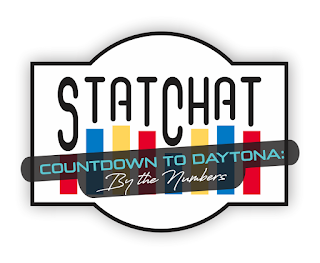NTT IndyCar Series Race Analysis: Texas Doubleheader
Saturday night was the first race of the weekend for the Genesys 300 at Texas Motor Speedway. With weather threating most of the day, practice was cut short and qualifying was canceled. Meaning both races would line-up based on the championship point standings. Alex Palou, who won the season opening race at Barber, started on pole position.
His lead didn't last long, as heavy favorite Scott Dixon took the lead and never really looked back as he led for 206 of the scheduled 212 laps of the event. Dixon really took the field to school and wasn't even a contest, as Palou regained the lead on a pit stop late in the event, but Dixion quickly regained the lead as the field cycled through as he went on to win in dominating fashion
A big surprise for Saturday's race was the first podium finish for the "Rookie" Scott Mclaughlin driving for Team Penske. He made his oval debut over the weekend and had a great showing by moving his way up through the field. Some of it was the crafty race strategy that Team Penske is famous for, but we cannot discredit his performance on track. He actually did try to make the race interesting near the closing laps, but just couldn't catch Dixion. Who seemed to be on rails as soon as the green flag waved. Mclauglin's performance shouldn't be a surprise. In pre-season testing, he ran the most laps during the open test, which certainly prepared him for his first ever start on an oval.
Dixon's performance was reminiscent of the race at St. Petersburg, where Colton Herta dominated the race. Very rare do we see dominating performances so close together in a IndyCar season, but knowing it is Texas, the results on Saturday really should not have surprised anyone. Texas has become a Scott Dixion play ground, as he has won three of the last five races ran there, which makes him the active wins' leader at the track.
The Xpel 300 started late Sunday afternoon, but as soon as the green flag waved, trouble came early.
Pietro Fittipaldi, the oval driver who is filling in for Roman Grosjean, got into the back of Sebastian Bourdais on the initial start and collected seven cars in that wreck. For Bourdais, who left race one after an early incident with Joesf Newgarden, made Bourdais's weekend go from bad to worse as he wrecked out in both events.
On lap 18, the race did get back going, as Dixon did pull out to an early lead after Palou did get a late jump on the restart. Jack Harvey, the young British driver for the Myers-Shank Racing team, improved from fifth to third.
Unfortunately for Harvey, his day ended after a wheel bearing failure on lap 117. Wheel bearing failures did plague some teams that get equipment from Andretti Engineering, as Colton Herta suffered the same fate the night before.
On lap 141, we had our third leader of the day, as Graham Rahal took the lead from Dixon, going into turn one, as Dixon was in a lower fuel mix, which allowed O'Ward and Rahal to catch up to Dixon. On lap 187, Rahal and Dixon made pit stops as they made the final stop, which allowed all the teams make it on fuel.
The moment that decided the race up to that point was a strategy call made by Bryan Herta and the Arrow Mclaren SP team on lap 188. As O'Ward made up time on his pit stop and on his out lap, as he was able to keep Rahal and Dixon behind him.
After a brief caution, Sato and Newgarden stayed out and tried to hit their fuel number to make it to the end, but it was no match on old tires, as they tried their best to hold of Pato O'Ward to take the lead for the first time that weekend with only fifteen laps to go.
For O'Ward, he never looked back as he won with a 1.26 second margin of victory. Which is his first win of his career, and Arrow Mclaren SP's first win in the series.
Collin's Take:
The Texas Doubleheader was very predictable. If you really think about it, you could easily see that someone was going to dominate race one and a more competitive race in the second event. For me, I am not a huge fan of doubleheaders, especially if the track provides racing that is not on par with the excitement of going to an oval in the IndyCar series. The PJ1 used in the NASCAR Cup Series race in November has really hurt the IndyCar product at Texas, as it has made one of the widest ovals in the United States to a one-groove race track.
This is the last time we will see the series on an oval before practice for the 105th running of the Indianapolis 500, which starts after the Grand Prix of Indianapolis. So from what we did see at Texas is that Andretti Autosport and Arrow Mclaren SP seem to be the fastest of the Chevy programs, and A.J. Foyt leads the way in the Honda camp with their respective oval programs.
Another takeaway is the difference in the engine programs of both manufacturers. It seems like Chevorlet has the fuel mileage issues solved, and Honda has seemed to up their horsepower from a couple of years ago. You may recall, those issues are what made the battle between Alexander Rossi and Simon Pagenaud at the 500 a couple of years ago so memorable. Which means Honda will have speed for Pole Day later this month.
Overall, this is a good start to the oval races this season. I think the aerodynamic package is working well, although with only one lane of Texas Motor Speedway being usable, we did not get a memorable race that we have gotten at Texas years ago.
The IndyCar series is off this weekend. The next race for the series is the GMR Indianapolis Grand Prix on May 15th on NBC.



Comments
Post a Comment